Epothilone D
- CAS NO.:189453-10-9
- Empirical Formula: C27H41NO5S
- Molecular Weight: 491.68
- MDL number: MFCD27976357
- SAFETY DATA SHEET (SDS)
- Update Date: 2024-11-25 20:05:57
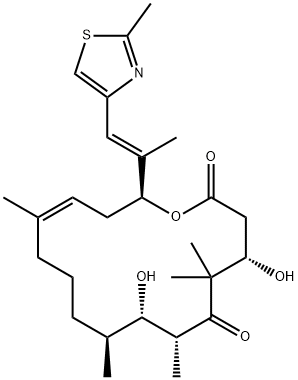
What is Epothilone D?
Description
Epothilones are microtubule-stabilizing agents with potential anti-neoplastic actions. They are natural macrolides that have high potency in both taxane-sensitive and taxane-resistant models. Epothilone D is a desoxy form of epothilone B (Item No. 10924) that inhibits the growth of a variety of cancer cells both in vitro (IC50 values range from 0.97 to 21 nM) and in mice. Epothilone D is brain penetrant and reduces neurodegeneration in aged tau transgenic mice. Effects include improved axonal transport, decreased tau neuropathology, and reduced hippocampal neuron loss. Epothilone D also rescues microtubule defects and attenuates nigrostriatal degeneration in a mouse model of Parkinson’s disease.
Chemical properties
White Foam
The Uses of Epothilone D
Epothilones are polyketide natural products that inhibit cancer cells by a mechanism similar to paclitaxel, and also are effective against paclitaxel-resistant tumours. Epothilone D is in phase I clinical testing of in patients with advanced solid tumours. Epothilone D is a cytotoxic macrolide that stabilises malignant cells' microtubules and arrests mitosis, a characteristic it shares with other epothilones. They bind to the same hepatic sites as does paclitaxel (Taxol) in a 1:1 stoichiometric ratio of a, b-tubulin heterodimers.
The Uses of Epothilone D
Epothilones are polyketide natural products that inhibit cancer cells by a mechanism similar to paclitaxel, and also are effective against paclitaxel-resistant tumours. Epothilone D is in phase I clinical testing of in patients with advanced solid tumours. Epothilone D is a cytotoxic macrolide that stabilises malignant cells'' microtubules and arrests mitosis, a characteristic it shares with other epothilones. They bind to the same hepatic sites as does paclitaxel (Taxol) in a 1:1 stoichiometric ratio of a, b-tubulin heterodimers.
What are the applications of Application
Epothilone D is an intermediary obtained in the synthesis of members of the epothilone family
Definition
ChEBI: An epithilone that is epithilone C in which the hydrogen at position 13 of the oxacyclohexadec-13-ene-2,6-dione macrocycle has been replaced by a methyl group.
in vitro
epothilone d is a more potent microtubule stabilizer in vitro than epothilone a or b. in vitro, epothilone d showed potent cytotoxicity in a panel of human tumor cell lines, with similar potency to paclitaxel. it also showed definite advantage over paclitaxel in drug-resistant cell lines, and retained its cytotoxicity against a multidrug resistant cell line over-expressing p-glycoprotein [1].
in vivo
in vivo, antitumor efficacy of epothilone d has been observed in both paclitaxel sensitive and resistant xenografts, as well as certain multidrug resistant xenografts including a doxorubinresistant ccrf-cem leukemic cell xenograft [1].
References
[1] konner j, grisham rn, park j, o'connor oa, cropp g, johnson r, hannah al, hensley ml, sabbatini p, mironov s, danishefsky s, hyman d, spriggs dr, dupont j, aghajanian c. phase i clinical, pharmacokinetic, and pharmacodynamic study of kos-862 (epothilone d) in patients with advanced solid tumors and lymphoma. invest new drugs. 2012 dec;30(6):2294-302. doi: 10.1007/s10637-011-9765-7.
Properties of Epothilone D
| Melting point: | 63-66°C |
| alpha | D22 -61.3° (c = 2.5 in methanol) |
| Boiling point: | 663.7±55.0 °C(Predicted) |
| Density | 1.084±0.06 g/cm3(Predicted) |
| storage temp. | -20°C Freezer |
| solubility | Soluble in DMSO |
| form | solid |
| pka | 13.47±0.70(Predicted) |
| color | white to off-white |
Safety information for Epothilone D
Computed Descriptors for Epothilone D
New Products
(S)-3-Aminobutanenitrile hydrochloride 4-Methylphenylacetic acid N-Boc-D-alaninol N-BOC-D/L-ALANINOL Tert-butyl bis(2-chloroethyl)carbamate N-octanoyl benzotriazole 3-Morpholino-1-(4-nitrophenyl)-5,6-dihydropyridin- 2(1H)-one Furan-2,5-Dicarboxylic Acid S-2-CHLORO PROPIONIC ACID ETHYL ISOCYANOACETATE 2-Bromo-1,3-Bis(Dimethylamino)Trimethinium Hexafluorophosphate 4-IODO BENZOIC ACID 3-NITRO-2-METHYL ANILINE 1-(2,4-DICHLOROPHENYL) ETHANAMINE (2-Hydroxyphenyl)acetonitrile 4-Bromopyrazole 5,6-Dimethoxyindanone 2-(Cyanocyclohexyl)acetic acid 4-methoxy-3,5-dinitropyridine 1-(4-(aminomethyl)benzyl)urea hydrochloride 2-aminopropyl benzoate hydrochloride diethyl 2-(2-((tertbutoxycarbonyl)amino) ethyl)malonate tert-butyl 4- (ureidomethyl)benzylcarbamate Ethyl-2-chloro((4-methoxyphenyl)hydrazono)acetateRelated products of tetrahydrofuran
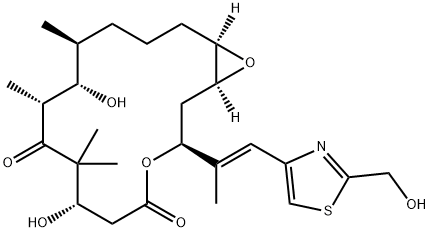
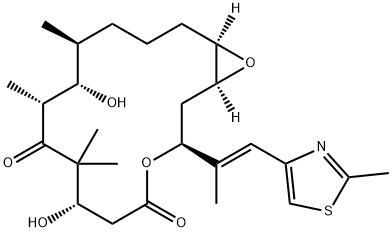
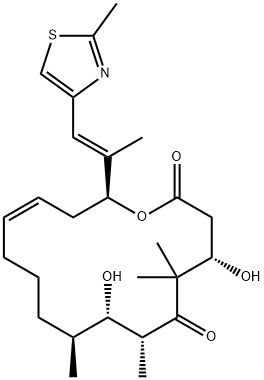

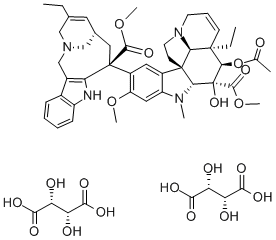
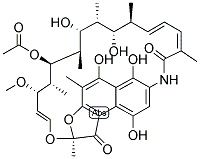
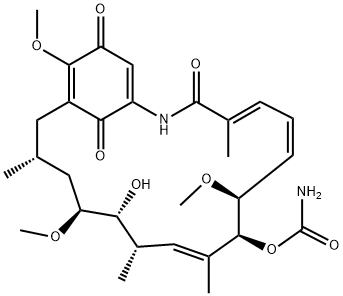

You may like
-
 2033-24-1 98%View Details
2033-24-1 98%View Details
2033-24-1 -
 42831-50-5 5-METHYLISOXAZOLE-4-CARBOXYLIC ACID 98%View Details
42831-50-5 5-METHYLISOXAZOLE-4-CARBOXYLIC ACID 98%View Details
42831-50-5 -
 1975-50-4 98%View Details
1975-50-4 98%View Details
1975-50-4 -
 2-HYDROXY BENZYL ALCOHOL 98%View Details
2-HYDROXY BENZYL ALCOHOL 98%View Details
90-01-7 -
 2-Chloro-1,3-Bis(Dimethylamino)Trimethinium Hexafluorophosphate 221615-75-4 98%View Details
2-Chloro-1,3-Bis(Dimethylamino)Trimethinium Hexafluorophosphate 221615-75-4 98%View Details
221615-75-4 -
 61397-56-6 CIS BROMO BENZOATE 98%View Details
61397-56-6 CIS BROMO BENZOATE 98%View Details
61397-56-6 -
 14714-50-2 (2-Hydroxyphenyl)acetonitrile 98+View Details
14714-50-2 (2-Hydroxyphenyl)acetonitrile 98+View Details
14714-50-2 -
 118753-70-1 98+View Details
118753-70-1 98+View Details
118753-70-1